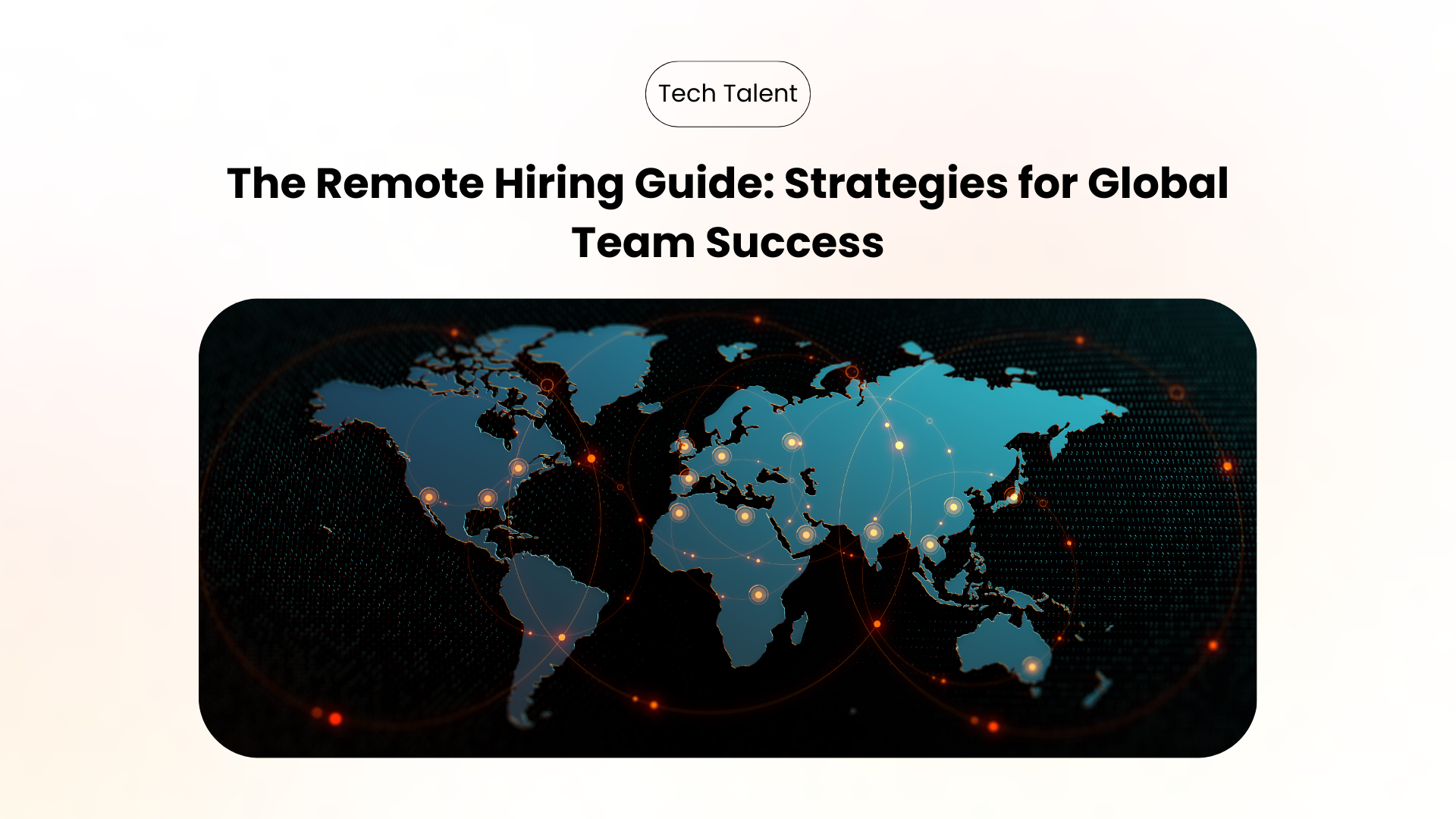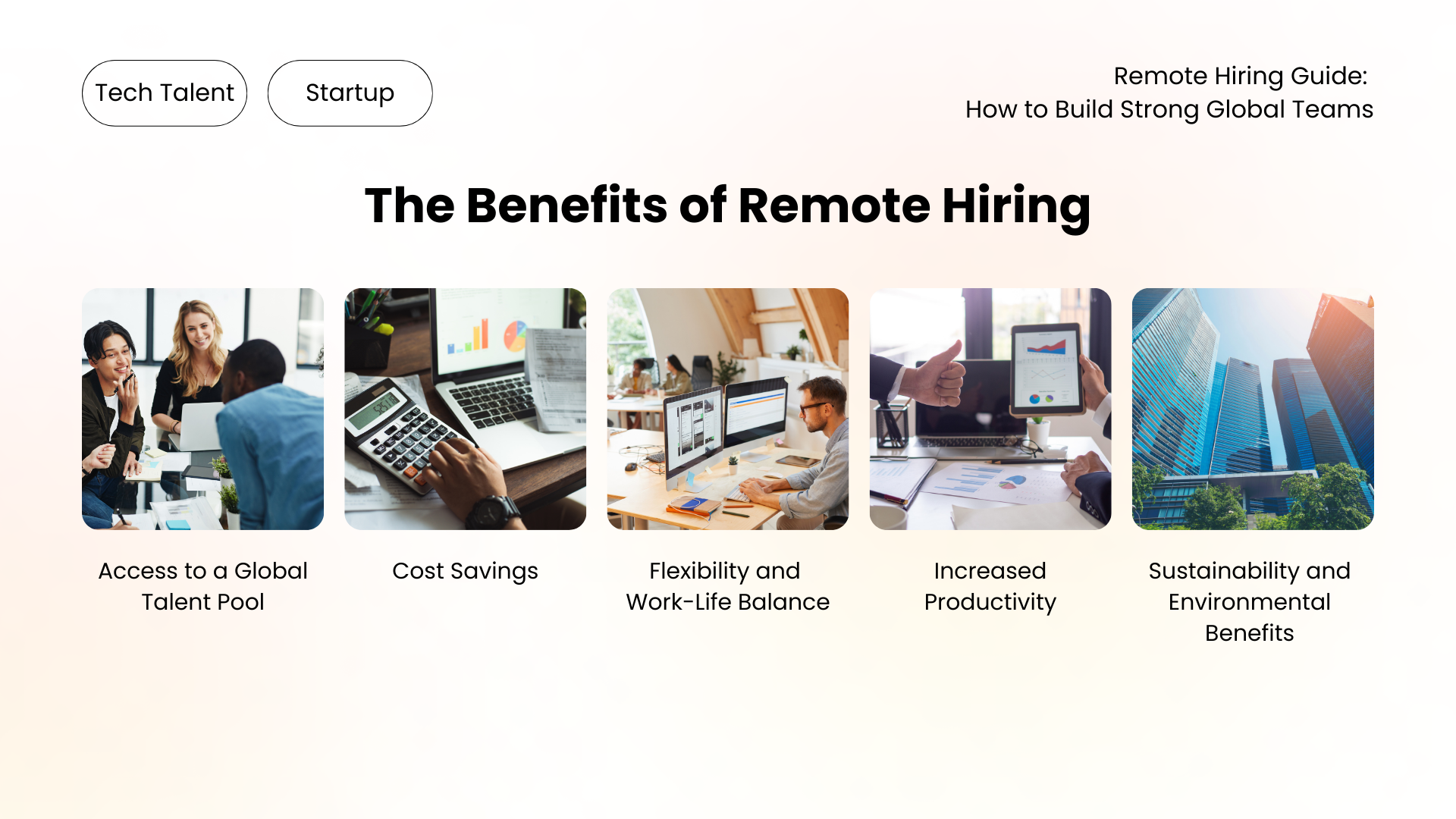The way companies hire talent has fundamentally changed. With remote work becoming the standard, businesses are no longer limited by geography when searching for the best candidates. Hiring remotely offers access to a global talent pool, reduces operational costs, and provides the flexibility needed to scale efficiently. With remote jobs predicted to increase by 25% to 92 million by 2030, companies that embrace global hiring will have a competitive edge in the modern workforce.
This guide will walk you through the key aspects of remote hiring, from sourcing talent to managing compliance, to help you build a strong and successful remote team.

What is Remote Hiring?
Remote hiring allows companies to recruit, interview, and onboard employees from anywhere in the world. It has become the norm across multiple industries, offering businesses access to specialized talent while reducing overhead costs. Whether you’re a startup or an established company, remote hiring enables you to find the right professionals without the constraints of a physical location.
The Benefits of Remote Hiring
Access to a Global Talent Pool
Hiring remotely eliminates geographical barriers, allowing businesses to find top-tier professionals across various time zones. Companies can recruit highly skilled software engineers, designers, marketers, and more, regardless of their location.
Cost Savings
Remote hiring reduces costs associated with office spaces, utilities, and relocation packages. Additionally, hiring professionals from regions with lower living costs allows businesses to offer competitive salaries without overextending budgets.
Flexibility and Work-Life Balance
Remote work enables employees to manage their schedules efficiently, leading to increased job satisfaction and productivity. A flexible work environment helps retain top talent by fostering a healthy work-life balance.
Increased Productivity
Studies show that remote employees often have fewer workplace distractions, leading to better focus and efficiency. By creating a results-driven culture, companies can maximize productivity while offering employees greater autonomy.
Sustainability and Environmental Benefits
Reducing office space and commuting decreases a company’s carbon footprint. Remote hiring supports sustainability initiatives by cutting down on energy consumption and travel-related emissions.

Building a Strong Remote Work Culture
Commit to a Remote-First Mindset
To create a thriving remote workforce, companies must fully integrate remote-first policies. Leadership should invest in digital collaboration tools, establish clear communication guidelines, and foster an inclusive remote work environment.
Clear Communication and Transparency
Effective communication is key to remote team success. Companies should implement structured communication processes using platforms like Slack, Microsoft Teams, and Zoom for regular updates, virtual meetings, and real-time collaboration.
Tools for Managing Remote Teams
To successfully manage a remote workforce, businesses must equip employees with the right tools:
- Slack or Microsoft Teams – For instant messaging and communication.
- Trello or Asana – For task and project management.
- Zoom or Google Meet – For video conferencing and interviews.
- GitHub or GitLab – For collaborative software development.
- Loom or Tella – For video messaging and training.
How to Write Job Listings for Remote Roles
Crafting a compelling job description is crucial for attracting the right remote candidates:
- Specify Remote Work Expectations – Define working hours, required tools, and communication standards.
- Emphasize Required Skills – Highlight both technical and soft skills necessary for remote collaboration.
- Describe Company Culture – Showcase how your company fosters a strong remote-friendly environment.
Assessing and Interviewing Remote Candidates
Hiring remote employees requires a unique approach:
- Skills Assessment – Use platforms like HackerRank or Codility for technical roles.
- Video Interviews – Evaluate communication skills and cultural fit through structured virtual meetings.
- Test Collaboration – Assign real-time problem-solving exercises to gauge teamwork and adaptability.
Onboarding Remote Employees
A structured onboarding process ensures new hires integrate smoothly:
- Provide a Clear Onboarding Plan – Outline expectations, company policies, and training materials.
- Assign an Onboarding Buddy – Pair new employees with mentors to ease their transition.
- Foster Engagement – Schedule regular check-ins and virtual team-building activities.
Compliance and Legal Challenges of Global Hiring
When hiring internationally, companies must navigate compliance regulations:
- Use PEO or EOR Services – Professional Employer Organizations (PEOs) and Employer of Record (EOR) services manage payroll, taxes, and labor law compliance.
- Understand Local Regulations – Research employment laws, tax policies, and data protection rules in each hiring region.
Remote Hiring Across Different Industries
Different industries require tailored approaches to remote hiring:
- Tech & Software Development – Assess coding skills and remote collaboration abilities.
- Marketing & Design – Prioritize creativity and strong communication.
- Customer Support – Look for responsiveness and experience with support platforms like Zendesk.
Common Remote Hiring Mistakes
Avoid these common pitfalls:
- Unclear Communication – Establish clear guidelines to prevent misunderstandings.
- Overlooking Soft Skills – Self-discipline and time management are just as important as technical expertise.
- Neglecting Onboarding – Structured training and mentorship are crucial for remote team success.
The bottom line
Remote hiring is an essential strategy for building high-performing global teams. Companies that embrace remote work gain access to a broader talent pool, increase cost efficiency, and enhance workforce flexibility. By investing in clear communication, proper onboarding, and compliance measures, businesses can create a thriving remote work culture that drives long-term success.
About Innovators Hub Asia
Innovators Hub Asia is an innovative technology system that combines 2,000 top innovators and tech talents and cutting-edge technology to deliver AI-driven solutions tailored to the business’s unique challenges. It aims to revolutionize business operations and accelerate growth through a wide range of services, including aiLabs, TalentCloud, Tech Venture Builder, and Co-Innovation Builder.






